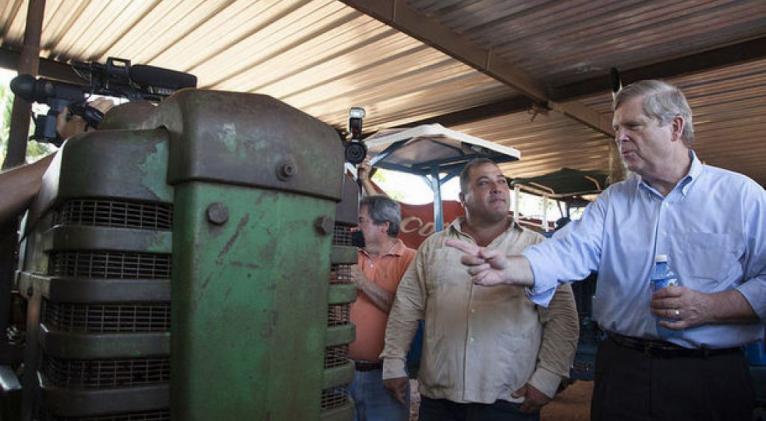Vilsack allows agricultural checkoffs in Cuba
especiales

As part of President Barrack Obama’s trip to Cuba to further normalization of relations, advance commercial and people-to-people ties, and express U.S. support for human rights in Cuba, U.S. Agriculture Secretary Tom Vilsack last week announced several measures to foster further collaboration between U.S. and Cuban agriculture sectors. The two neighboring countries share common climate and agriculture-related concerns.
While in Cuba, Vilsack said the U.S. Department of Agriculture will allow the 22 industry-funded Research and Promotion Programs and 18 Marketing Order organizations to conduct authorized research and information-exchange activities with Cuba. These groups, which are responsible for creating bonds with consumers and businesses around the world in support of U.S. agriculture, will be able to engage in cooperative research and information exchanges with Cuba about agricultural productivity, food security and sustainable natural-resource management.
Vilsack and Cuban Minster of Agriculture Gustavo Rodriguez Rollero are expected to sign a Memorandum of Understanding establishing a framework for sharing ideas and research between the two countries. Vilsack also invited Rollero to join a trip to one of the agency’s Climate Sub Hubs in Puerto Rico in late May, where USDA researchers are studying the effects of climate change in the subtropical region.
“U.S. producers are eager to help meet Cuba’s need for healthy, safe, nutritious food,” Vilsack said. “Research and Promotion, and Marketing Order programs have a long history of conducting important research that supports producers by providing information about a commodity’s nutritional benefits and identifying new uses for various commodities. The agreements ... will help U.S. agricultural interests better understand the Cuban market, while also providing the Cuban people with science-based information as they grow their own agriculture sector.”
USDA will review all proposed Research and Promotion Board and Marketing Order activities related to Cuba to ensure they are consistent with existing laws. Examples of activities that may take place include:
- Provide nutritional research and guidance, as well as participate with the Cuban government and industry officials, at meetings regarding nutrition and related Cuban rules and regulations.
- Conduct plate-waste study research in schools to determine what kids eat and what they discard, leading to improved nutritional information that helps develop the guidance for school-meal requirements, ensuring kids are receiving adequate nutrition to be successful in school.
- Provide U.S.-based market, consumer, nutrition and environmental-research findings to Cuban government and industry officials.
- Research commodities’ role in a nutritious diet that improves health or lowers the risk of chronic diseases.
- Study the efficacy of water disinfectants to eliminate/inactivate bacteria on commodities
- Test recipes and specific products among Cuban consumers of all ages, with the goal of increasing product development and acceptance.
- Conduct consumer-tracking studies to measure attitudes when it comes to a specific commodity and consumption, and to identify consumer groups based on behavior, attitudes and purchasing habits for a particular commodity.
While most U.S. commercial activities are prohibited, the Trade Sanctions Reform Act of 2000 permits the export of U.S. agricultural commodities. U.S. agricultural exports to Cuba are limited, though, by U.S. restrictions on government export assistance, cash payments and extending credit.
U.S. agricultural exports have grown significantly since trade was authorized in 2000. In 2014, Cuba imported more than $2 billion in agricultural products, including $300 million from the United States. However from 2014 to 2015 U.S. agricultural exports to Cuba fell 48 percent, to $148.9 million, the lowest since 2002. That resulted in the United States having just a 10 percent market share as Cuba’s fourth-largest agricultural supplier, behind the European Union, Brazil and Argentina.
The current visit to Cuba is the first by a sitting U.S. president in nearly 90 years. It was Vilsack’s second visit. According to the president, he is committed to charting a new course for U.S.-Cuban relations through expanded travel, commerce and access to information.













Add new comment